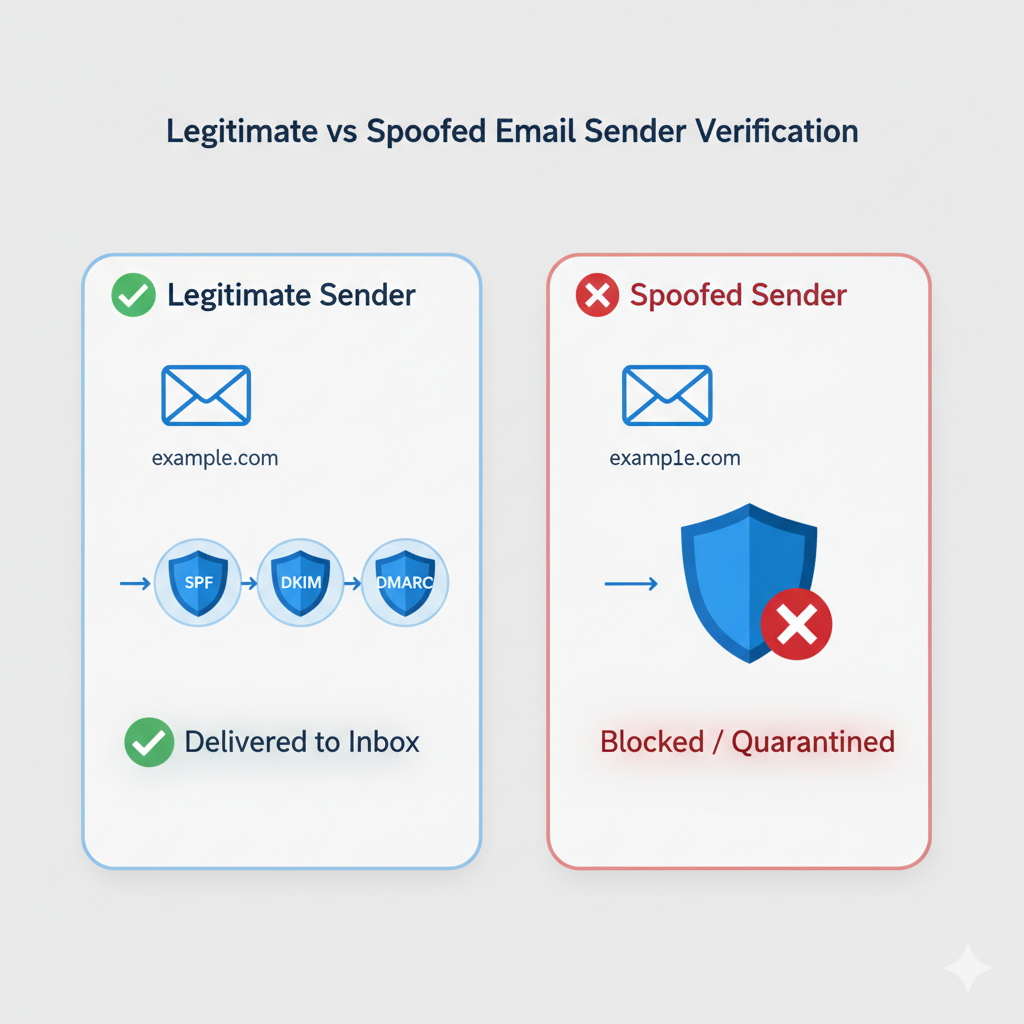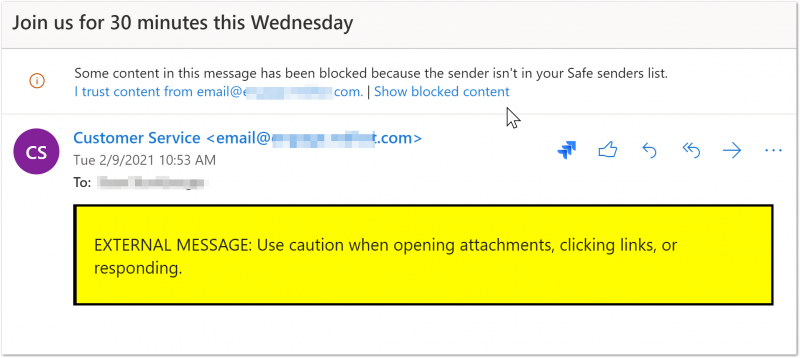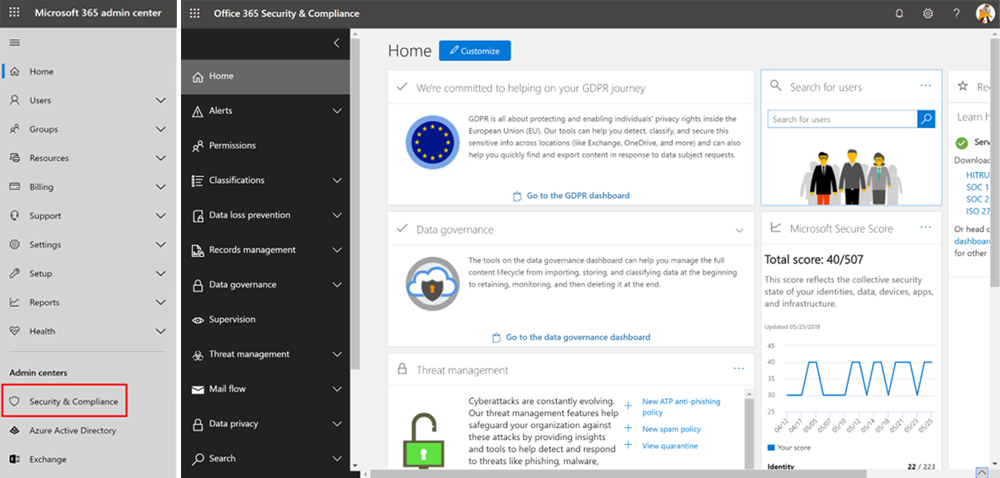You open your inbox and see another email claiming your account has been compromised. It looks convincing — the sender name, the logo, even the tone feels real. But one wrong click could expose your passwords, data, or your entire organization.
Phishing attacks and fake messages have become part of everyday digital life. Hackers send out millions of deceptive emails daily, each designed to trick people into revealing sensitive information or downloading malware. Even cautious users can fall for them.
That’s where Microsoft 365 email security comes in. It helps protect your inbox from phishing, fake messages, and other online threats that put your data at risk. With built-in features like Safe Links, Safe Attachments, and real-time threat detection, Microsoft 365 automatically scans links and attachments to block harmful content before it ever reaches you.
These security layers work quietly in the background to stop suspicious emails, reduce risk, and keep your communications safe without adding extra steps.
Understanding how these protections work — and what warning signs to watch for — can make a big difference in keeping your personal and business accounts secure. In this guide, you’ll learn how Microsoft 365 email security defends your inbox and practical steps to help you recognize and report phishing attempts effectively.
Why Phishing Protection Matters
Phishing is one of the most common and dangerous types of online scams. Attackers use fake emails to trick people into giving up passwords, credit card numbers, or company data. A single click on a bad link can lead to serious consequences such as stolen accounts or ransomware infections.
That’s why Microsoft 365 email security focuses on preventing threats before they reach your inbox. It uses artificial intelligence, real-time threat detection, and global data from billions of messages to spot and block potential attacks automatically.
You can learn more about how phishing works on CISA’s official phishing resource page.
How Microsoft 365 Email Security Protects You
Microsoft 365 includes multiple layers of email protection that work together to keep your inbox safe.
Safe Links: When you receive an email with a link, Microsoft 365 checks it for hidden risks. Safe Links scans every URL in real time, so even if a site becomes malicious after the email is sent, you’re still protected.

Learn more on the official Safe Links page: Safe Links – Microsoft Defender for Office 365.
Safe Attachments: Attachments are another common source of threats. Safe Attachments automatically scans files before they reach your inbox. If something looks suspicious, it’s quarantined so it can’t infect your system.

See details here: Safe Attachments – Microsoft Defender for Office 365.
Anti-Spoofing and Anti-Spam: Microsoft 365’s anti-spoofing features verify sender addresses to prevent fake or misleading emails from appearing trustworthy. Combined with anti-spam filters, these tools block junk mail and known phishing domains.

AI and Threat Intelligence: Using machine learning and Microsoft’s global security data, Microsoft 365 continuously improves its protection systems. It can detect new phishing methods and automatically adjust filters to stop evolving threats.

How to Spot a Suspicious Email
Even with Microsoft 365’s protections, phishing emails can still slip through. Knowing what to look for can help you stay safe.
Common Signs of Phishing:
-
Urgent language, such as “Your account will be locked” or “Immediate action required”
-
Misspelled company names or odd-looking email addresses
-
Unexpected attachments or links
-
Requests for personal or financial information
-
Poor grammar or unprofessional tone
If you see any of these signs, don’t click anything. Report the message using the Report Message add-in in Outlook.
Best Practices to Strengthen Microsoft 365 Email Security
Following a few good habits makes your account even more secure.
Use Multi-Factor Authentication (MFA): Turn on MFA for all users. This adds an extra layer of security by requiring verification through another device or app. Even if your password is stolen, your account remains safe.
Read more here: Set up multi-factor authentication for Microsoft 365.
Review Email Rules Regularly: Hackers sometimes create hidden inbox rules that forward or delete your messages. Check your Outlook settings often to make sure no unauthorized rules are active.
Train Your Team: If you manage a business, provide phishing awareness training. Even one careless click can put your company at risk. Microsoft offers free cybersecurity awareness training through its Security Learning Hub.
Keep Your Email Security Up to Date
Microsoft regularly updates its security tools to stay ahead of attackers. Keep your Microsoft 365 apps updated and review your security settings monthly.
Tip: Check your email security reports weekly during the first month, then once a month after that to track blocked threats and flagged messages. If your business needs to meet compliance requirements like ISO 27001 or HIPAA, Microsoft 365 audit logs (available in higher plans) help monitor who made changes and when.

Learn more here: Search the audit log in the Microsoft Purview compliance portal.
Phishing scams are getting smarter, but so are your defenses. With Microsoft 365 email security, you can protect your inbox, block dangerous links, and reduce the chances of a data breach.
Whether you manage a business or just want to protect your personal account, staying alert and using Microsoft 365’s built-in protections gives you a strong advantage.
For more tips on protecting your digital environment, check out our articles on Cloud Sentry Blog and learn how to make your website faster and safer.
If you need help setting up Microsoft 365 email security or improving your organization’s protection, contact Cloud Sentry for expert guidance and personalized support.





